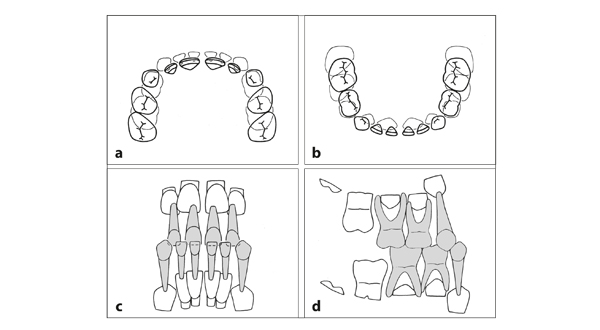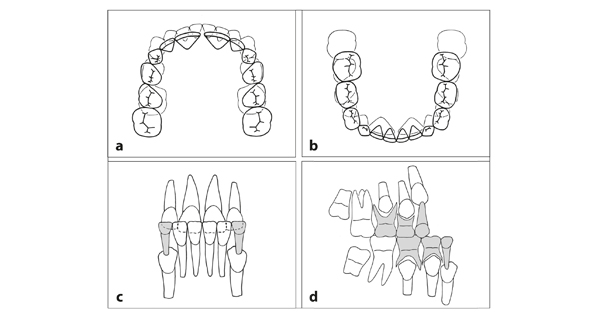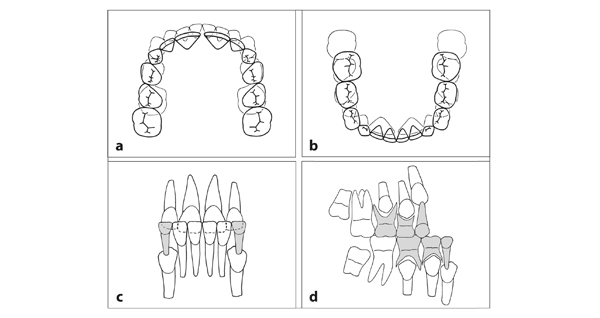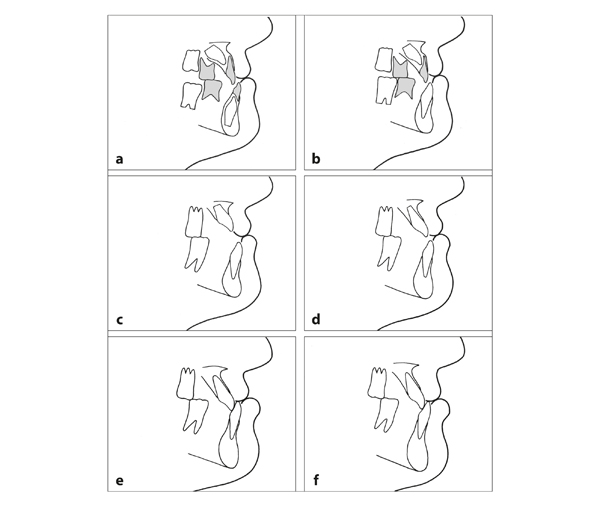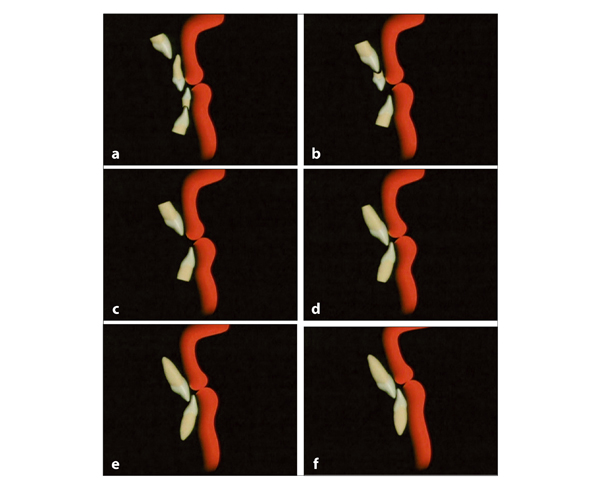CHAPTER 13
Class III Malocclusions
Characteristics of Class III Malocclusions
In Class III malocclusions, the mandibular dental arch is positioned anterior to the maxillary dental arch. This leads to mesioclusion and a negative overjet. In occlusion, the edges of the mandibular incisors are anterior to the maxillary incisors. As mentioned previously, the Angle classification does not specify if the malocclusion is caused by an abnormality in the mandible, the maxilla, or a combination of the two.
Between 1% to 2% of the Western population and 5% to 10% of the Asian population have a Class III malocclusion.1–3 The primary factor in Class III malocclusions is the mesial relationship of the jaws. Secondary aspects are the negative overjet and, in severe cases, the tipping of the maxillary incisors to the labial and the mandibular incisors to the lingual.
The development of Class III malocclusions cannot be explained using a normal mandibular dental arch as a starting point, as was done for the Class II, division 1 malocclusion. As described previously, in Class II, division 1 malocclusions, the overjet and overbite enlarge gradually with the increase of the distoclusion. The form of the mandibular dental arch, as seen from the occlusal, is unchanged or only slightly affected. In Class III malocclusions, however, the increase in mesioclusion leads to a reverse sagittal contact of the incisors with specific deviations in tooth positions in both jaws.
Class III malocclusion is shown for the deciduous dentition in Fig 13-1, the intertransitional period in Fig 13-2, and the permanent dentition in Fig 13-3. In addition, the malocclusion is illustrated with clinical photographs in Fig 13-4. This is followed by the presentation of the transition of the incisors and the emergence of the first permanent molars in Fig 13-5.
Fig 13-1 Class III malocclusion in the deciduous dentition (compare with Fig 2-26). (a and b) The mandibular dental arch is too anterior in relation to the maxillary dental arch. The deciduous molars occlude adequately in the transverse direction. There is a negative overjet at the incisors and canines. (c) There is a slight overbite. (d) The occlusion of the mandibular deciduous molars with the maxillary deciduous molars is too mesial. The terminal plane has an abnormally large mesial step.
Fig 13-2 Class III malocclusion in the intertransitional period (compare with Fig 4-1). (a and b) The mandibular dental arch is too anterior in relation to the maxillary dental arch. There is a negative overjet. The positions of the individual teeth are adapted to the occlusion, which crosses at the canine region. The mandibular incisors overlap the maxillary incisors. (c) The edges of the maxillary incisors are in contact with the lingual surfaces of the mandibular incisors. (d) The mandibular first permanent molar occludes too mesially, making only slight contact with the maxillary first permanent molar.
Fig 13-3 Class III malocclusion in the permanent dentition (compare with Fig 7-1). (a and b) The mandibular dental arch is too anterior in relation to the maxillary dental arch. There is a negative overjet. (c) The mandibular canines are located labial to the maxillary lateral incisors. (d) All posterior teeth occlude one premolar crown width too far to the mesial.
Fig 13-4 Class III malocclusion. (a) The midface recedes, the mandible dominates, and the lower lip protrudes. (b to d) The mandibular incisors are tipped lingually and occlude anterior to the maxillary incisors. There is mesioclusion on both sides.
Fig 13-5 Development of a Class III malocclusion (compare with Fig 3-4). (a) There is already a negative overjet in the deciduous dentition. The position and inclination of the permanent incisors within the jaws is normal. The lower lip is more anteriorly located than the upper lip. (b) The mandibular central permanent incisors erupt and emerge normally. The lower lip does not touch the maxillary central deciduous incisors. (c) The first permanent molars have emerged in mesioclusion. The mandibular central incisors erupt further. The maxillary central incisors erupt from the position they occupied in the jaw. (d) The lower lip does not touch the maxillary central incisors and does not affect their inclination. The maxillary central incisors are not vertically supported by the lower lip. (e) Their labial incisal edges contact the lingual surface of the mandibular incisors. (f) The prominence of the chin has increased.
In Class III malocclusions, the lower lip is clearly positioned more anteriorly than the upper lip. Together with the dominant chin, it causes the characteristic appearance and profile of a Class III malocclusion (Fig 13-6). The negative overjet leads to a specific relationship between the lips and incisors and affects the sagittal and vertical support of the incisors.
Fig 13-6 Influence of the to/>
Stay updated, free dental videos. Join our Telegram channel

VIDEdental - Online dental courses


